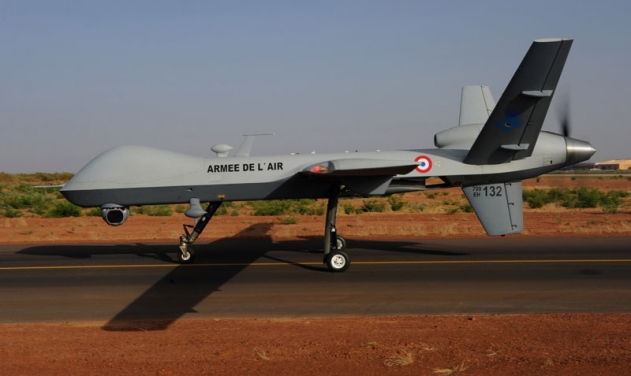U.S. F-16 Downs Turkish Drone Over Syria: First Ever Skirmish Between NATO Allies

In a significant event, an American F-16 fighter jet engaged and downed a Turkish unmanned aerial vehicle (UAV) over Syrian territory, marking a historic first-time encounter between NATO member nations.
The incident occurred today in the vicinity of Hasakah, Syria, where the Turkish drone had been observed conducting airstrikes within a U.S.-restricted operating zone (ROZ), situated just a kilometer from U.S. forces in the region.
While the U.S. did not specify the name of the Turkish drone it shot down, military observers on social media suggested that it was the ANKA-S combat drone. The Turkish drone had reportedly bombed positions of the Syrian Democratic Forces (SDF), which are U.S. allies in Syria's northeast. The SDF fights against the Islamic State of Iraq and Syria (ISIS) and the Al-Qaeda-affiliated terrorists in Syria.
In an official statement, the U.S. Department of Defense said it promptly responded to the situation, with Secretary of Defense Lloyd J. Austin III engaging in a phone call with Turkish Defense Minister Yasar Guler to address the incident. During the conversation, both leaders expressed regret over the event and emphasized the importance of maintaining focus on the mission to defeat ISIS in Syria.

Pentagon Press Secretary Air Force Brig. Gen. Pat Ryder addressed the media during a briefing, stating, "The secretary reaffirmed that the United States remains in Syria exclusively in support of the campaign to defeat ISIS. The secretary also acknowledged Turkey's legitimate security concerns and underscored the importance of close coordination between the United States and Turkey to prevent any risk to U.S. forces or the global coalition’s defeat-ISIS mission."
According to Ryder, the sequence of events leading to the downing of the Turkish UAV unfolded as follows:
- At approximately 7:30 a.m. local time, U.S. forces observed UAVs conducting airstrikes in the Hasakah area, some of which occurred within the declared U.S.-restricted operating zone.
- By around 11:30 a.m. local time, a Turkish UAV reentered the ROZ and was heading toward the location of U.S. forces, now less than half a kilometer away.
- U.S. commanders assessed the Turkish UAV as a potential threat, leading U.S. F-16 fighters to shoot down the drone in self-defense at approximately 11:40 a.m. local time.

Fortunately, there were no injuries reported among U.S. forces, and there is no indication that Turkey intentionally targeted U.S. personnel.
During the media briefing, General Ryder reiterated, "It's a regrettable incident, but U.S. commanders on the ground did assess that there was a potential threat and so they took prudent action in this scenario. But again, the secretary has talked to his counterpart. They had the opportunity to have a fruitful conversation and ... commit to one another that the U.S. and Turkey will continue to closely communicate and coordinate. And as I mentioned, Turkey does remain a very important and valuable NATO ally and partner to the United States."
The incident also led to high-level discussions between military leaders from both nations. The newly sworn-in Chairman of the Joint Chiefs of Staff, Gen. CQ Brown, Jr., engaged in a conversation with his Turkish counterpart, Chief of the General Staff of the Turkish Armed Forces, Gen. Metin Gurak. During this dialogue, they reaffirmed the shared objective of defeating ISIS and emphasized the importance of following common deconfliction protocols to prevent future incidents.
As both nations strive to maintain their strategic alliance within NATO, the incident highlights the challenges of coordinating military operations in a complex and volatile region like Syria, where multiple actors are engaged in the fight against terrorism. The incident serves as a reminder of the need for continued communication, coordination, and deconfliction efforts between NATO allies to avoid unintended confrontations and maintain the focus on their shared objectives in the region.













